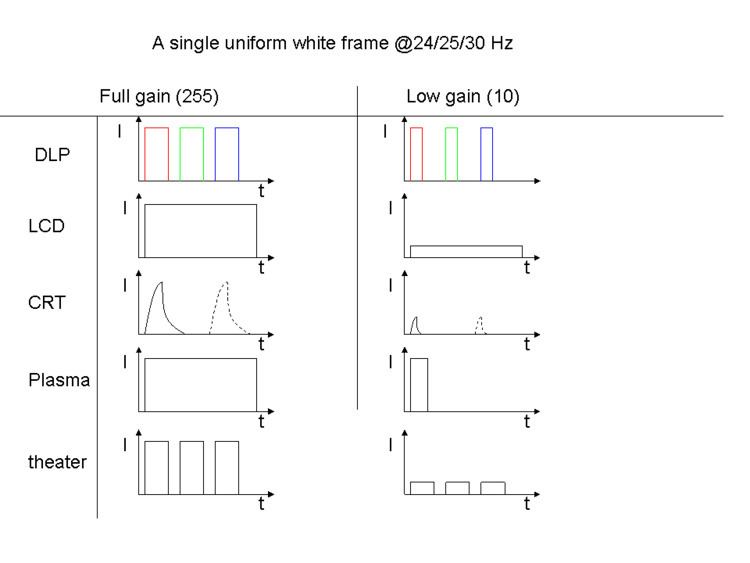This is a comparison of various properties of different display technologies.
Different display technologies have vastly different temporal characteristics, leading to perceptual differences for motion, flicker, etc.
The figure shows a sketch of how different technologies present a single white/grey frame. Time and intensity is not to scale. Notice that some have a fixed intensity, while the illuminated period is variable. This is a kind of pulse-width modulation. Others can vary the actual intensity in response to the input signal.
Single-chip DLPs use a kind of "chromatic multiplexing" in which each color is presented serially. The intensity is varied by modulating the "on" time of each pixel within the time-span of one color. Multi-chip DLPs are not represented in this sketch, but would have a curve identical to the plasma display.LCDs have a constant (backlit) image, where the intensity is varied by blocking the light shining through the panel.CRTs use an electron beam, scanning the display, flashing a lit image. If interlacing is used, a single full-resolution image results in two "flashes". The physical properties of the phosphor are responsible for the rise and decay curves.Plasma displays modulate the "on" time of each sub-pixel, similar to DLP.Movie theaters use a mechanical shutter to illuminate the same frame 2 or 3 times, increasing the flicker frequency to make it less perceptible to the human eye.
